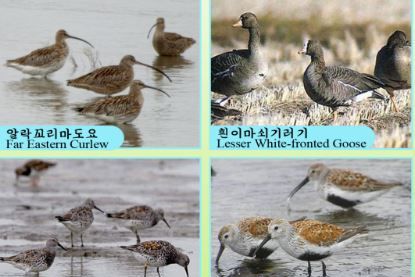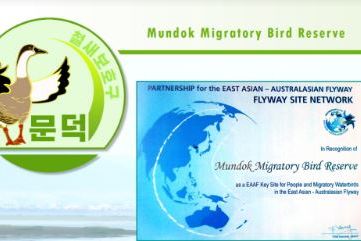Publication
Migratory Bird Reserves in the DPRK

The Mundok and Kumya Migratory Bird Reserves are both officially recognized as East Asian – Australasian Key Sites for People and Migratory Waterbirds by the EAAFP. The EAAFP conducts a variety of projects regarding the conservation of endangered migratory waterbirds and their sites along the East Asian – Australasian Flyway.
The Kumya Migratory Bird Reserve in the South Hamgyeong Province has been recognized as a National Migratory Bird Reserve by North Korea since 1995. The ground acts as a habitat of over 200 bird species per season as well as an important breeding ground for fishes like salmons and trouts.
The Mundok Migratory Bird Reserve, which also has been recognized as a National Migratory Bird Reserve by the DPRK, is also officially a Wetland of International Importance (Ramsar Site) as of January 2018. The Bird Reserve supports a vast amount of globally threatened species such as the Spoon-billed Sandpiper, Fairy Pitta or the Swan Goose, which is one of the most dominant species of the site. The Mundok Migratory Sites further supports a length of odd mammal, amphibian and reptile species as well as a number of fish, Annelid, Mollusca, Crustacean and zoobentho species. Due to it is diversity it is considered as one of North Koreas most important Bird Reserves.

The brochure, published by the Ministry of Land and Environmental Protection (MoLEP) and the EAAFP helps to understand the importance of the Wetlands more, as well as gives a deeper insight the occurring species of those. Both the MoLEP and the EAAFP are long-term partners of the HSF Korea, as we are also conducting a vast number of conservational projects in the DPRK and along the East Asian – Australasian Flyway. Recently the HSF Korea also supported the publishing of an information booklet about bird species in the DPRK.
We, as well as our partners, will continue to work for the protection of wetlands and endangered bird species and hope that publications like this will make more people aware of the precarious situation.
